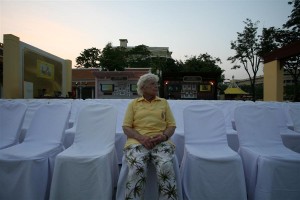Consider Amnesia
If we are affected by our past, then what would happen if we could forget?
The application of experience is a method of predicting future outcome. If you walk onto frozen ice, and hear a crack, you apply a prediction pattern and race off the ice to preserve your safety. This learning of patterns is a background process for adults, and a priority process in small children. We use these patterns to recognize physical danger and preserve our lives, but in some circumstances the recognition of these situations becomes inaccurate and we initiate protections when there is no danger.
What happens when our ability to predict danger fails?
Incorrectly applied patterns of behavior are most often seen with people who have faced unusual experiences resulting in emotional and psychological responses outside of the norm. For an adult who was beaten as a child by his caregiver, the sound of an aggressor behind them elicits an immediate response of danger, fear and flight, — even if there is no aggressor present. These incorrect prediction patterns are stored by our unconscious mind, and pushed into action to keep us from danger. These patterns, like any dangerous experience, can be elevated to hyper-vigilance by an over-protective or over-stimulated brain. While the intention is to survive, the cost can be emotional and psychological instability.
When a person experiences frequent predicted patterns of danger, every similar situation becomes dangerous, and the presets of fear and flight put into action. These false alarms can be exhausting, wearing out the emotional state of a person without impunity. Because these patterns keep us from danger, the mind will go to extreme measures to keep them activated. Even as fact proves the danger false, our brain’s choice is to react now, determine truth later. This response keeps us alive in situations where we need vigilance. When the pattern is incorrect, though, it is a source of never-ending alarm and stress. For those who cannot escape their heightened state of danger, the toll of stress can be devastating. Maintaining a state of alarm requires energy from other sources, diminishing everyday mental and physical functions and creating new stresses in the process.
It is difficult to change the prediction pattern for a danger that does not exist. The key is to short the responsible circuit. To acquire amnesia. To do this requires techniques from a branch of therapy called Cognitive Behavior Therapy (CBT). This form of therapy stops the circuit responsible for the behavior by breaking the chain of command. We cannot alter the electric circuit of the brain, but we can step in front of the logical path and obstruct its use. To acquire amnesia is to short the circuit, which works to stop the response, remove the power of the pattern, and put balance back into the process. This works by a challenging everything, assuming nothing, and demanding fact-based answers to assumptions. In this process a person experiencing an erroneous prediction pattern would be challenged on their belief. Here’s how that process might look.
- Client: I need to get out of here? Therapist: Why? Client: I’m in danger? Therapist: From what? Client: I’m not going to be hurt again. Therapist: Who is going to hurt you? Client: I don’t know. Therapist: What is it you don’t know? Client: I don’t know what’s going to hurt me. Therapist: If you don’t know what’s going to hurt you, then how can it hurt you? Look around here and tell me what can hurt you. Client: It’s just how I feel. Therapist: Why is that? Client: I don’t know. Therapist: So you are in fear of something you can’t see, but you think will physically harm you? How is that possible? Client: I don’t know. Therapist: Could it be that what you fear does not exist here? Client: Possibly. Therapist: Is it possible that what you fear is the past and not what is here now? Client: Possibly. Therapist: Why do you think that is?
In this exchange, the therapist stands in the way of any path responsible for the belief that the person in psychological jeopardy is in actual danger. By standing in the path, it stops the prediction pattern with indisputable knowledge. When challenged, the danger loses its power and shorts the circuit that continues the pattern. Once the pattern is powered off, it is open for dispute, and the therapeutic process continues.
The power of this healing process is that it is a tool kit easily applied outside of therapy. When a client is feeling in danger, they start a disputing dialog with themselves using a simple question: What if I had amnesia right now? This question disputes the prediction pattern by labeling it as intangible, a memory, not a fact. This allows a new path and pattern to form in place of the faulty predictions. This process takes practice and diligence, but with time the ability to break the circuits becomes easier, the detrimental patterns subside, and the mind lowers it’s sense of alarm.

